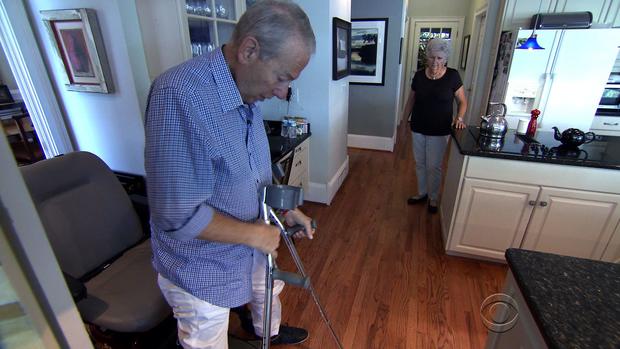Research making ALS less of a mystery
Ed Tessaro, 68, just joined the ALS Ice Bucket Challenge, the social media fundraising phenomenon that has brought in over $100 million in donations to fight ALS, or Lou Gehrig's disease.
But Tessaro's challenge is different than most. Tessaro has been fighting the disease for more than five years.
"My arms and legs are weaker, when I walk I'm pretty much at risk," Tessaro told CBS News. "That's really the only bad news. I'm breathing at 100 percent of normal, which is great news."
In ALS, motor neurons, the nerve cells that control voluntary muscles, detach from the muscle and die. Patients lose control of movement and eventually their ability to breathe on their own. The cause of ALS is unknown.
Tessaro is one of 30 patients in a clinical trial who had stem cells injected into their spinal column in an attempt to slow the progression of the disease.
Normally, neurons are surrounded by cells that protect and nourish them. New research suggests that in ALS patients, these supporting cells become killers, poisoning the motor neurons. Animal studies have found stem cells can help heal the toxic supporting cells.
"What the stem cells will do is create a nutritious environment for those motor neurons that are sick," said Dr. Jonathan Glass at Emory University, who is leading the trial. That process, he said, allows the sick motor neurons "to recover somewhat so they can reconnect with the muscles or they can keep them from disconnecting from muscles for a longer period of time."
Over the past decade, ALS research has been jump-started by technology that creates a so-called "disease in a dish."
Skin cells from an ALS patient are reprogrammed to become stem cells, then morphed into neurons in the lab. These neurons exhibit the same abnormalities as those in the ALS patient.
This has sped up the pace of discovery for neuroscientists like Thomas Jessell at Columbia University Medical Center.
"It permits you to screen compounds - drugs, medicines - and if they work in that tissue culture dish condition you can then go back and test them in the human," Jessell said.
Any "eureka" moments in the dish?
"Yes. We have compounds that when you add them, motor neurons don't die, and is that a big eureka moment or is that a little eureka moment?," Jessell said.
"And so you have to be guarded but at the same time seize the enthusiasm of the discovery, no matter how small."
It's a long way from a drug that works in a Petri dish, or a stem cell that works in an animal, to an effective treatment. But there is hope because every day, ALS is becoming less of a mystery.

